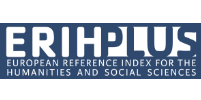Avaliação da Esperança em Adolescentes Escolares // Assessment of Hope in School Adolescents
DOI:
https://doi.org/10.36517/revpsiufc.16.2025.e025002Palavras-chave:
esperança, adolescente, saúde mental, fatores de proteçãoResumo
Esperança é um estado positivo de motivação para o alcance de objetivos, influenciada por aspectos individuais e ambientais, contribuindo para o bem-estar. Na adolescência, a esperança é mencionada como fator protetivo em saúde mental. Este trabalho objetiva avaliar o nível de esperança em adolescentes escolares. A amostra contou com estudantes do 9º ano do Ensino Fundamental e 1º ano do Ensino Médio de uma escola pública. No estudo qualiquantitativo foi aplicada a Escala de Esperança de Herth (EEH). Os resultados evidenciaram a presença de esperança moderada em ambos os grupos de alunos. Os achados revelaram que o maior escore de esperança estava na afirmação 7 Eu posso me lembrar de tempos felizes e prazerosos, sinalizando existir a memória de boas experiências que sustentam a esperança. O menor índice de esperança foi encontrado na afirmação 6 Eu tenho medo do meu futuro, aludindo à preocupação dos estudantes quanto ao que está porvir no futuro pessoal e profissional. Esse achado está de acordo com a literatura e com as inquietudes próprias da faixa etária da adolescência. O estudo reitera a importância de promover o diálogo com os adolescentes acerca dos desafios atuais e das perspectivas de vida, como prevenção em saúde mental.
Downloads
Referências
Ahrnberg, H., Appelqvist-Schmidlechner, K., Mustonen, P., Fröjd, S., & Aktan-Collan, K. (2021). Determinants of Positive Mental Health in Adolescents–A Cross-Sectional Study on Relationships between Positive Mental Health, Self-Esteem, Character Strengths and Social Inclusion. International Journal of Mental Health Promotion, 23(3), 361-374. https://doi.org/10.32604/IJMHP.2021.016408
Aiello-Vaisberg, T. M. J. (1999). Encontro com a loucura: transicionalidade e ensino de psicopatologia. (Tese de Livre Docência). Instituto de Psicologia, Universidade de São Paulo. Recuperado de http://www.teses.usp.br/teses/disponiveis/livredocencia/47/tde- 24022006-090139/pt-br.php
Beattie, T. S., Prakash, R., Mazzuca, A., Kelly, L., Javalkar, P., Raghavendraet, T. … Watts, C. (2019). Prevalence and correlates of psychological distress among 13–14 year old adolescent girls in North Karnataka, South India: a cross-sectional study. BMC Public Health, 19(48), 1-12. https://doi.org/10.1186/s12889-018-6355-z
Carmona-Halty, M., Schaufeli, W. B, Llorens S., & Salanova, M. (2019). Satisfaction of Basic Psychological Needs Leads to Better Academic Performance via Increased Psychological Capital: A Three-Wave Longitudinal Study Among High School Students. Front. Psychol, 10, 1-5. https://doi.org/10.3389/fpsyg.2019.02113
Creswell, J. W. (2007). Projeto de Pesquisa: métodos qualitativo, quantitativo e misto. 2 ed. Porto Alegre: Artmed.
Domingues, A. C. (2021). A promoção da esperança no jovem adulto com um primeiro surto psicótico. Dissertação de Mestrado, Especialização em Enfermagem de Saúde Mental e Psiquiátrica, Escola Superior de Enfermagem de Lisboa. 156 páginas. Recuperado de https://comum.rcaap.pt/handle/10400.26/43746
Finch, J., Waters, A. M., & Farrell, L. J. (2023). Adolescent Anxiety, Depression and Flourishing before and During COVID-19 and the Predictive Role of Baseline Psychological Capital (PsyCap) on Student Mental Health and Subjective Wellbeing During the Pandemic. Child Psychiatry Hum Dev. https://doi.org/10.1007/s10578-023-01568-z
Fraser, A. M., Bryce, C. I., Alexander, B. L., & Fabes, R. A. (2021). Hope levels across adolescence and the transition to high school: Associations with school stress and achievement. Journal of Adolescence, 91, 48-58. https://doi.org/10.1016/j.adolescence.2021.07.004
Guan, J., Liu, B., Ma, W., & Liu, C. (2023). The relationship between negative parenting styles and suicidal ideation among Chinese junior middle school students: The roles of negative emotions and hope. Psychology in the Schools, 1-19. https://doi.org/10.1002/pits.23081
Hu, Y., & Jiang, X. (2022). Hope as an engine mediating the relation between parental attachment and social problem solving skills in adolescents. School Psychology International, 43(3), 237-252. https://doi.org/10.1177/01430343221091991
Jiang, Y., Ren, Y., Zhu, J., & You, J. (2022). Gratitude and hope relate to adolescent nonsuicidal self-injury: Mediation through self-compassion and family and school experiences. Current Psychology, 41, 935-942. https://doi.org/10.1007/s12144-020-00624-4
Kashiwabara, T.; Fujiwara, T.; Doi, S., & Yamaoka, Y. (2022). Association between Hope for the Future and Academic Performance in Adolescents: Results from the K-CHILD Study. International Journal of Environmental Research and Public Health, 19(19), 1-12. https://doi.org/10.3390/ijerph191911890
Khurana, S., Wei, M. A., Karlovich, A. R., & Evans, S. C. (2023). Irritability and Suicidality in Clinically Referred Youth: Clarifying the Link by Examining the Roles of Age and Hope. J Psychopathol Behav Assess, 45, 640-649. https://doi.org/10.1007/s10862-023-10049-5
Kirby, K., Sweeney, S., Armour, C., Goetzke, K., Dunne, M., Davidson, M., & Belfer, M. (2022). Developing Hopeful Minds: Can Teaching Hope Improve Well-being and Protective Factors in Children?, Child Care in Practice, 28(4), 504-521, https://doi.org/10.1080/13575279.2021.1924121
Kogler, R., Vogl, S., & Astleithner, F. (2022). Plans, hopes, dreams and evolving agency: case histories of young people navigating transitions. Journal of Youth Studies, 1-14. https://doi.org/10.1080/13676261.2022.2156778
Ngwenya, N., Barnett, T., Groenewald, C., & Seeley, J. (2021). Complex trauma and its relation to hope and hopelessness among young people in KwaZulu-Natal, South Africa, Vulnerable Children and Youth Studies, 16(2), 166-177. https://doi.org/10.1080/17450128.2020.1865593
Pacico, J. C., Zanon, C., Bastianello, M. R., & Hutz, C. S. (2011). Adaptação e validação do The Hope Index para adolescentes brasileiros. Psicologia: Reflexão e Crítica, 24(4), 666-670. https://doi.org/10.1590/S0102-79722011000400006
Paludo, S. S., Mazzoleni, M., & Silva, A. P. C. (2018). Expressão de esperança em adolescentes em situação de acolhimento institucional. Revista da SPAGESP, 19(1), 76-89. Recuperado de http://pepsic.bvsalud.org/scielo.php?script=sci_arttext&pid=S1677-29702018000100007&lng=pt&tlng=pt
Ricker, B. T., Cooley, J. L., Sanchez, C. R., Gunder, E. M., Dooley, J. A., Chilton, M., & Ritschel, L. A. (2022). Prospective Associations Between Peer Victimization and Internalizing Symptoms in Adolescence: The Protective Role of Hope. Journal of Psychopathology and Behavioral Assessment, 44, 649-662. https://doi.org/10.1007/s10862-022-09966-8
Sartore, A. C., & Grossi, S. A. A. (2008). Escala de Esperança de Herth: instrumento adaptado e validado para a língua portuguesa. Revista Da Escola De Enfermagem Da USP, 42(2), 227-232. https://doi.org/10.1590/S0080-62342008000200003
Sautier, L. P., Sarkar, S., Petersen, M., Mehnert, A., & Escherich, G. (2015). Psychische Belastungen von Kindern und Jugendlichen nach einer Leukämie oder Lymphomerkrankung. Praxis Der Kinderpsychologie Und Kinderpsychiatrie, 64(4), 273-289. https://doi.org/10.13109/prkk.2015.64.4.273
Somers, C. L., Gill-Scalcucci, S., Flett, G. L., & Nepon, T. (2022). The Utility of Brief Mattering Subscales for Adolescents: Associations with Learning Motivations, Achievement, Executive Function, Hope, Loneliness, and Risk Behavior. Journal of Psychoeducational Assessment, 40(1), 108-124. https://doi.org/10.1177/07342829211055342
Snyder, C. R. (2002). Hope theory: Rainbows in the mind. Psychological Inquiry, 13(4), 249-275. https://doi.org/10.1207/S15327965PLI1304_01
Sparks, L. A., Trentacosta, C. J., Hicks, M. R., Kernsmith, P., & Smith-Darden, J. (2021). Hope as a Protective Factor: Relations to Adverse Childhood Experiences, Delinquency, and Posttraumatic Stress Symptoms. Journal of Child and Family Studies, 30, 3005-3015. https://doi.org/10.1007/s10826-021-02119-7
Streck, H., Nishen, A. K., & Kessels, U. (2022). Instrumentality Gives Girls the Edge: Gender-Differential Relations Between Instrumentality, Achievement Motivation, and Self-Esteem. Sex Roles, 86, 379-394. https://doi.org/10.1007/s11199-021-01270-1
Thomas, K. J., da Cunha, J., & Santo, J. B. (2022). Changes in Character Virtues are Driven by Classroom Relationships: A Longitudinal Study of Elementary School Children. School Mental Health, 14, 266-277. https://doi.org/10.1007/s12310-022-09511-8
Wang, Y., Clemens, J. L., Muriello, M., Mu, W., Smith, C. H., Tran, P. T. … Bodurtha, J. (2022). Agreement between parent-proxy and child self-report in pediatric hypermobile Ehlers-Danlos syndrome. Journal of Child Health Care, 21, 1-13. https://doi.org/10.1177/13674935221110081
Winnicott, D. W. (2005). A tendência anti-social (1956). In Privação e delinquência (Álvaro Cabral, trad., pp. 135-147). São Paulo: Martins Fontes. (Trabalho original publicado em 1984).
Winnicott, D. W. (1990). O Ambiente. In Natureza Humana (pp.173-180). Rio de Janeiro, RJ: Imago. (Trabalho original publicado em 1988).
Wnuk, M. (2023). The Indirect Relationship Between Spiritual Experiences and Subjective Wellbeing Through Hope? A Sample of Chilean Students. J Relig Health, 62, 964-983. https://doi.org/10.1007/s10943-021-01459-4
Zhang, A., Ji, Q., Zhang, K., Cao, Q., Chen, Y., Chen, J., & DuVall, A. (2022). Solution-focused brief therapy for adolescent and young adult cancer patients in China: a pilot randomized controlled trial. Journal of Psychosocial Oncology, 40(6), 816-833. https://doi.org/10.1080/07347332.2021.1931627
Zhang, L., Roslan, S., Zaremohzzabieh, Z., Liu, K., Tang, X., Jiang, Y., & Mohamad, Z. (2023). A serial mediation model of negative life events on school adjustment of left-behind adolescents in rural china: the central role of hope and gratitude. BMC Psychiatry, 23, 1-11. https://doi.org/10.1186/s12888-023-05102-2
Publicado
Como Citar
Edição
Seção
Licença
Copyright (c) 2025 Sra. Cláudia Silva, Sra. Ivonise Motta

Este trabalho está licenciado sob uma licença Creative Commons Attribution-NonCommercial 4.0 International License.




















